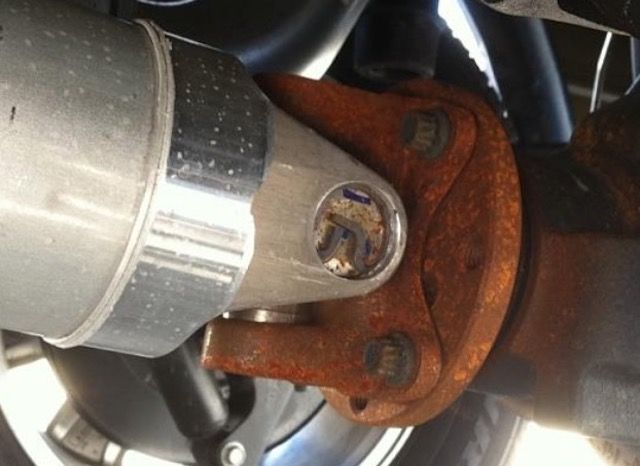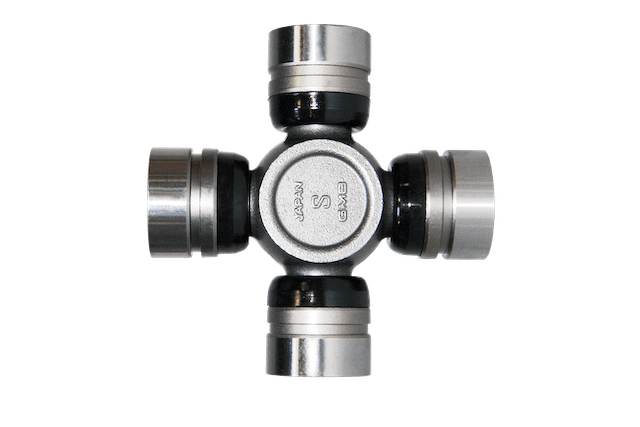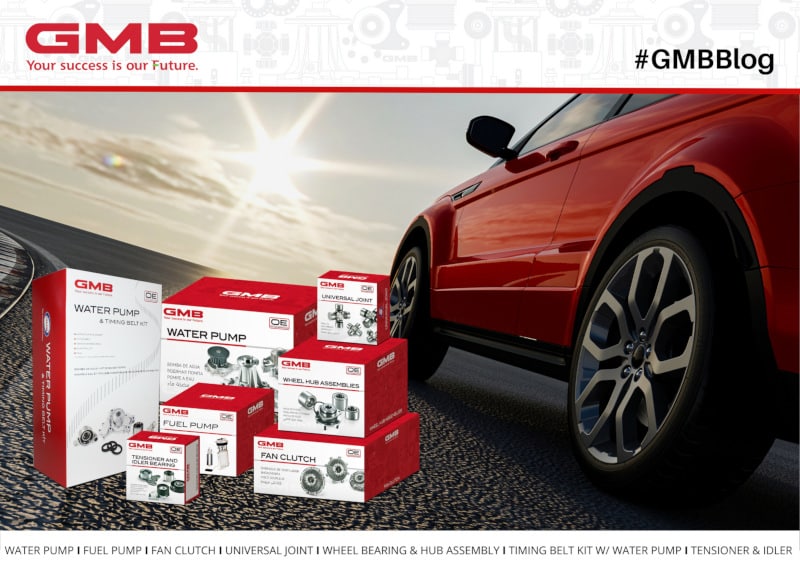U-Joints: When In Doubt, Change It Out
U-joints should last the life of the vehicle, but that’s not always the case. Some u-joints fail from normal wear and tear, especially on vehicles that are frequently used for heavy towing or off-roading. U-joints can also fail as a result of misalignment, corrosion, or excessive vibration.
When a u-joint fails, it can be catastrophic. In fact, u-joint failure is such bad news that it’s always safer to err on the side of caution.
Signs of a Loose U-Joint

When you notice any of the symptoms listed below, check your u-joints as soon as possible.
- Clunking/clanking noise when you shift gears
- Vibration when accelerating or decelerating
- Loud metal-on-metal banging (this is a sign that the u-joint will completely fail very soon)
When there are signs that the joint isn’t 100%, always replace it. In other words, when in doubt, change it out. Even if the u-joint is a little loose, it’s still better to buy a replacement u-joint now than it is to let the u-joint worsen to the point of complete failure.
What Happens When a U-Joint Fails?
When a u-joint fails, your vehicle breaks down and stops moving. It sounds simple, but it’s actually not. There can be a lot of damage involved. The driveshaft assembly can come loose and even fall off. In that case, the entire driveshaft may need to be replaced. There may also be extensive damage to the underside of the vehicle and potentially to the driveline itself. The u-joint is a small part, but it can cause thousands of dollars in repairs if it completely fails. If your u-joint fails while your vehicle is in motion, it may cause an accident.
Neglecting to replace a u-joint when symptoms start to crop up can bring some really serious consequences. That’s why we always say that it’s better to err on the side of caution and replace a u-joint as soon as it starts to fail.
How to Inspect Your U-Joints

It is a good practice to inspect your u-joints on a regular basis rather than wait for the symptoms to show up. Some people inspect their u-joints every time they change the oil. At the very least, you should inspect your u-joints twice a year. You can find a u-joint inspection guide that’s specific to your model, but the basic overview of the process is as follows:
- Engage the emergency brake.
- Raise your vehicle.
- Find the driveshaft and then attempt to rotate it by hand in both directions.
- Grab the driveshaft near the u-joint and push it up/down and side to side.
If you find any movement from the u-joint (even slight movement), then replace it as soon as possible.
Replacement U-Joints: Quality Matters
Since the u-joint is an extremely important part in your vehicle, quality should matter a lot while shopping for replacement u-joints. As one of the world’s largest u-joint manufacturers, GMB builds sturdy and reliable u-joints to OE specs. All GMB u-joints are built with high-quality materials (including special chrome-molybdenum alloy steel for superior corrosion resistance), heavy duty needle bearings, and an exact fit snap ring to ensure longevity and reliability. All GMB u-joints are also extensively tested for maximum quality control.
If you’re in the market for new u-joints, you can’t go wrong with GMB.
MORE CONTENT
Stay current!
Sign up here to get the latest news
and updates on all things GMB.
Sign Up To Receive GMB News & Updates!

